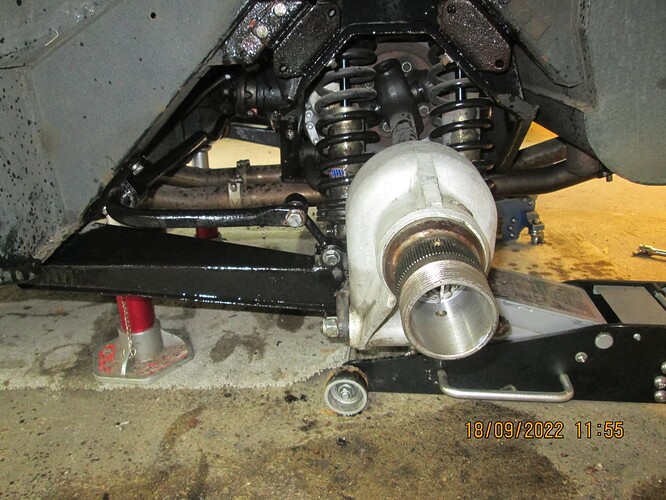Do I assume this is not the correct anti roll bar for a series 1 roadster? I cannot find a picture where I can see if the drop links should be (more) vertical ?
Advice as always gratefully appreciated
best regards
Phil D
That looks just like my s2. It looks a little weird but works okay.
My S1 FHC looks just the same.
Looks right or the same as my SII. It may straighten out under load.
The link angle actually increases under load. Look under your car.
I’ll take you word.
Wouldn’t that decrease the performance of it ?
It does decrease the effective spring rate (wheel rate?) of the ARB, just as an angling a coil over shock does. To the vectors goes the coils. Okay, very bad pun, but the math concept is valid.
With coil overs the angle is often a case of packaging consideration and following the suspension arc of travel. Not sure why they would angle an ARB link so much here.
Outstanding! Gotta love it!!
The rear sway bar is pretty much useless anyway. I think everybody I raced E Types with eliminated it. A heavy/strong rear bar typically induces oversteer, a very undesirable characteristic in the 60’s when gross understeer was preferred, and exhibited by stock E Types.
The stock rear bar in a E Type has a calculated spring rate of 80 pounds per inch before the rubber, as compared to a stock front bar (.750") which has a rate of 348, and a 7/8" front bar (a size I recommend you use) with a rate of 646 pds/inch.
And look at the rubber used to mount the rear bar - two big donuts connect the trailing arm to which the bar is attached to the body and hub, then two more in an angled drop link and finally a big one that mounts the bar to the car. It’s highly doubtful you’d notice the difference if you removed it.
Interesting stuff. Funny enough I was at CKL engineering here in the uk this week where a number of etypes were being reviewed/serviced following their participation at the Goodwood revival. A number of those cars have the rear anti-roll bars but use rose joints for the drop links and poly bushes elsewhere.
Pretty standard operating procedure, for high-performance cars: You get better control and more adjustability.
All that rubber was pretty standard across most manufacturers at the time. Poly was available as a product starting when, maybe the 80’s?
Also while we’re on the subject, I have 2 rear bars of different horizontal lengths I acquired with a project car; is the length difference based on Series or maybe 2+2 vs. 2 seater?
